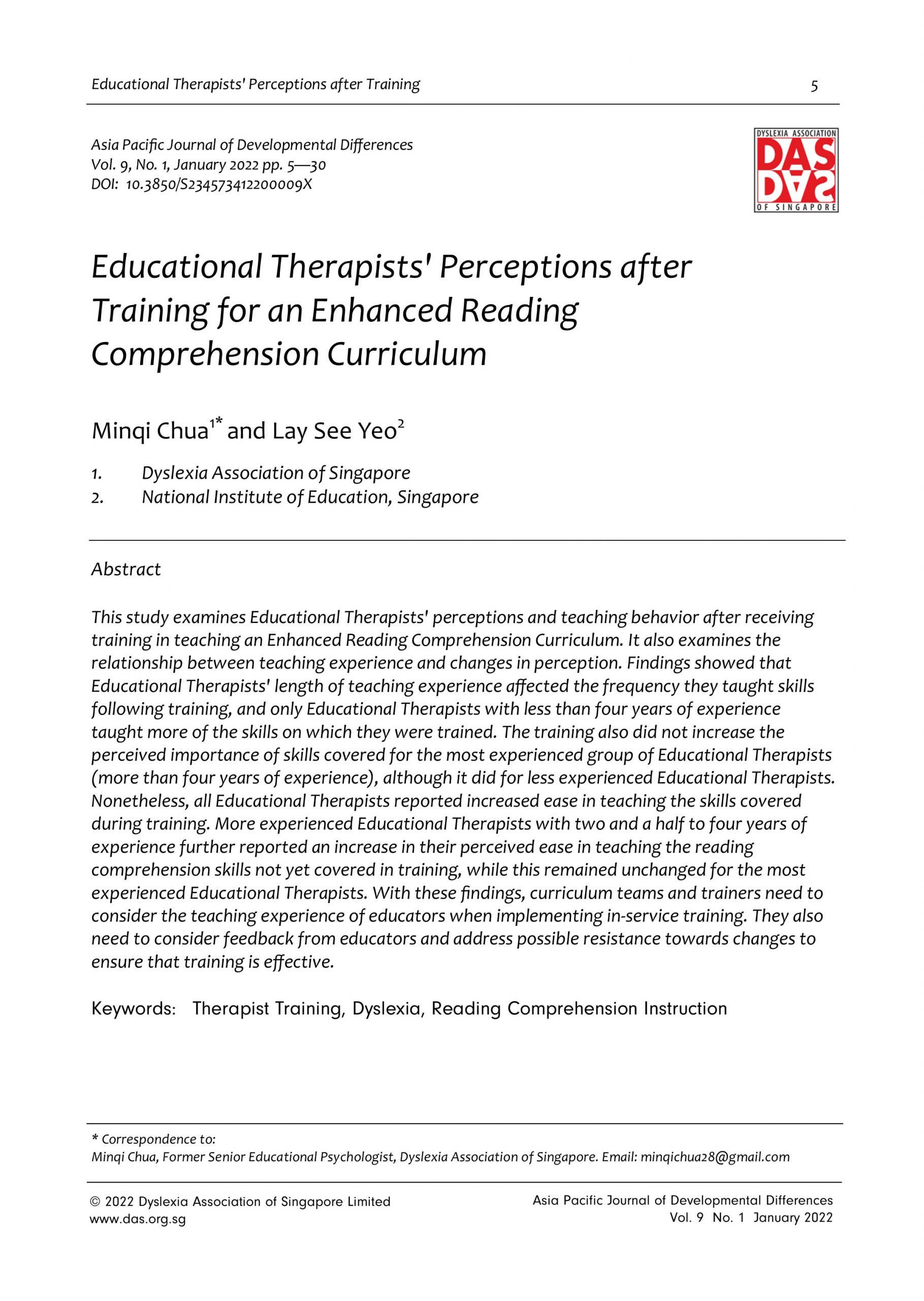3. Empowering teachers, empowering the nation: Developing an accessible training system for dyslexia in Indonesia.
Empowering teachers, empowering the nation: Developing an accessible training system for dyslexia in Indonesia.
Kristiantini Dewi Soegondo1, Purboyo Solek1, Munadia1, Rima Natasha Hartanto1, Wiyarni Pambudi1, Rina Elizabeth1, R. Irma Rachmawati1, Yulianti Iman1, Dina Alia1, Athiyatul Aufie1, R. Nur Brusiana Suandi1, Ikfina Maufuriyah2
- Dyslexia Association of Indonesia
- Komunitas Peduli Anak, Jepara, Indonesia
Abstract
This article reports a large-scale qualitative research project designed to increase awareness of dyslexia in Indonesia, in 3 phases, i) evaluating current knowledge ii) updating current knowledge and iii) providing in-depth training and application of skills, and disseminating this knowledge more widely. A large-scale questionnaire study of 1781 teachers revealed a high degree of misunderstanding and belief in myths about dyslexia within the teaching population in Indonesia. In response to this perceived need, the Dyslexia Association of Indonesia undertook the development and dissemination of a training course for teachers, over a 5-year period, originally designed to be delivered in person, but most recently delivered online in 2021, in response to the limitations of Covid. 894 teachers in all benefitted from this training, delivered over 28 sessions. Participants were asked to commit to attending regularly and completed a questionnaire survey, and reflection on the course. Those who had achieved solid results from this initial training, based on the criteria of regular attendance and improvement on scores in understanding dyslexia, were invited to join a more focused in-depth bursary funded dyslexia workshop. Finally, the trained teachers were invited to disseminate their knowledge more widely, and seven teachers elected to set up their own seminars and workshops and work on individual education plans for the children that they taught. In this article, the potential of this approach is discussed for reaching a wider population of teachers in a country spanning an area equivalent to eight of the earth’s circumference in scattered islands, This approach has the potential to increase dyslexia awareness and understanding, and ensure that appropriate support for dyslexia can be provided more widely in Indonesia.
Keywords: Indonesia, dyslexia awareness, teacher training, dissemination










